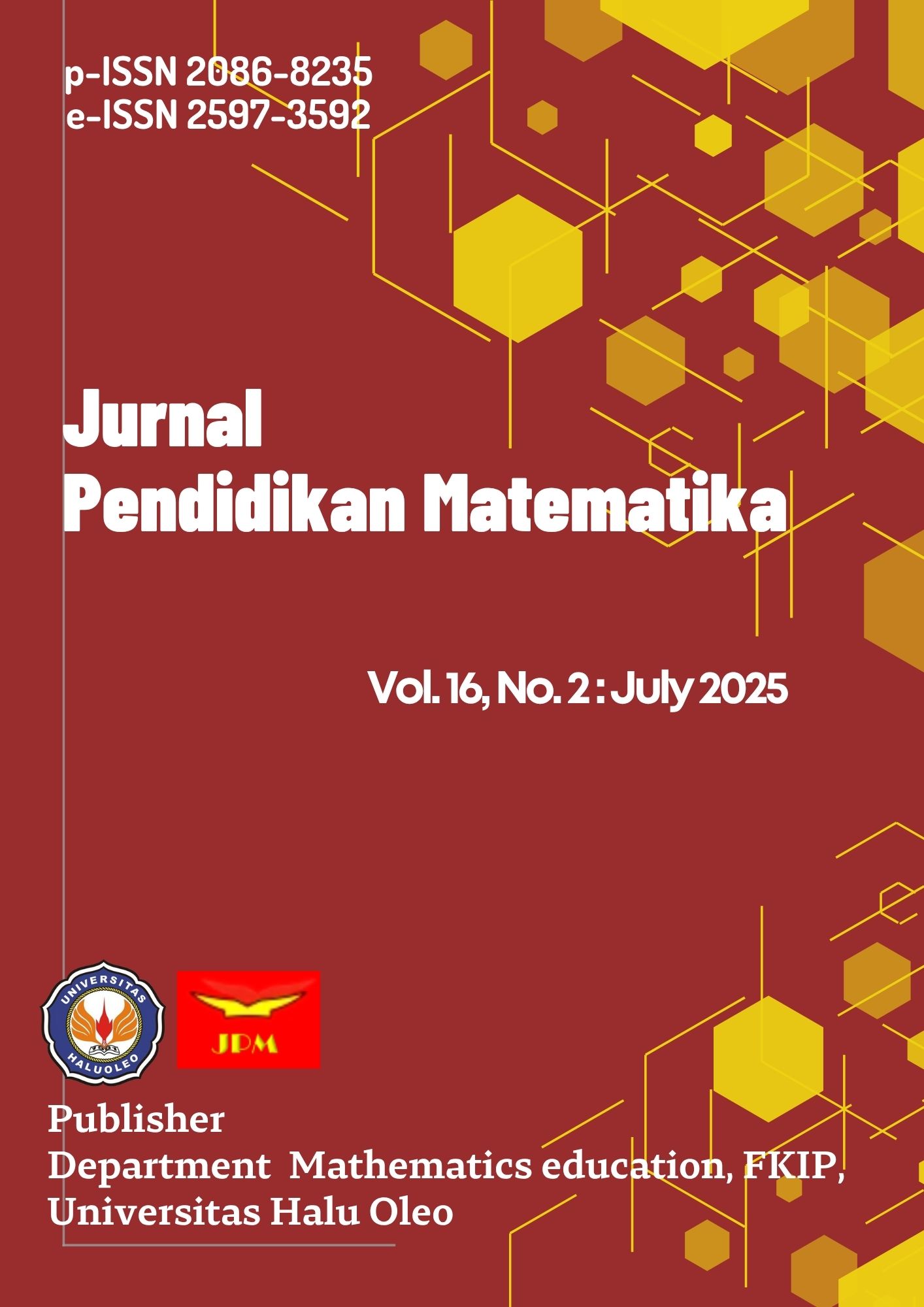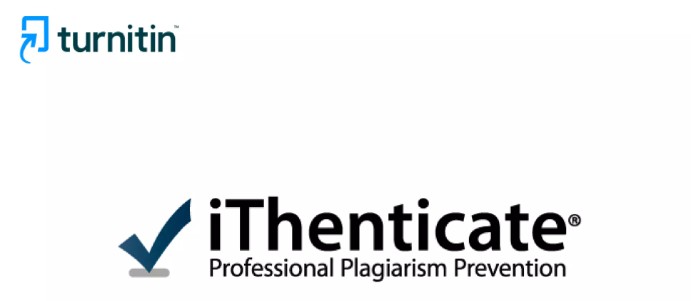Ethnomathematical Exploration of Geometric Concepts in Betawi Traditional Food
DOI:
https://doi.org/10.36709/jpm.v16i2.332Keywords:
ethnomathematics, geometry concepts, mathematics, traditional betawi foodAbstract
This study aims to explore the ethnomathematical values contained in eight traditional Betawi foods, namely egg crust, goyang flowers, rangi cakes, ulite cakes, pepe cakes, dongkal cakes, ketapang seeds, and geplak cakes, and relate them to mathematics learning at the elementary school level, especially in flat building materials. Using a descriptive qualitative approach through observation and documentation, this study identifies various geometric shapes found in these foods. The results of the analysis show that flat shapes such as circles, squares, rectangles, triangles, and parallelograms are explicitly reflected in the visuals of traditional Betawi food. For example, the egg crust, shake kembang, and geplak cake show circular shapes; pepe cake and knuckle cake show square and rectangular shapes; dongkal cake is triangular; and ketapang seeds resemble the shape of a parallelogram. These findings indicate that traditional Betawi foods can be used as contextual learning media based on local culture to help students understand geometric concepts in a concrete way. In addition to the form aspect, mathematical value is also found in the measurement element, which adds to the potential for the integration of ethnomathematics in the elementary school curriculum. The visual shape of food that tends to remain unchanged confirms its existence as a traditional heritage, where shape change is considered a creation, not part of a tradition.
References
Andriliani, L., Amaliyah, A., Putry Prikustini, V., & Daffah, V. (2022). Analysis of Mathematics Learning in Geometry Material. Sibatik Journal: Scientific Journal in the Fields of Social, Economic, Cultural, Technological, and Educational, 1(7), 1169–1178. https://doi.org/10.54443/sibatik.v1i7.138
Andyana, I. W., & Maharbid, D. A. (2024). Improving the Learning Outcomes of Grade IV Students in Mathematics Subjects of Flat Building Materials through the Realistic Mathematics Education Learning Model. Elementary Journal, 7(1). https://doi.org/10.47178/4mrjgg50
Awiria, N. S., Putri, F. D. C., & Yohamintin. (2020). Mathematics Learning in Elementary Elementary Schools. Ferris wheel Independent Creation, 44(8).
Budiyanti, N. F. (2023). Preservation of Rangi Cake as a Betawi Gastronomic Cultural Heritage. (Universitas Pendidikan Indonesia)
Carawita, D. A., Dwiyanti, E., & Mardiyanti, S. (2023). Ethnomathematical Exploration of Traditional Betawi Snacks. Original Research, 58, 9–16.
Dewantara, Y. F. (2021). Analysis of the Potential of Betawi Culinary Tourism in Tourism Development in the City of Jakarta. Journal of Applied Science in Tourism, 6(1), 20–28.
Dewi, C. M., Hairiza, A., & Limbong, E. G. (2020). Color as a brand identity on the packaging of traditional Kembang Goyang food typical of Betawi. Visual Heritage: Journal of Art and Cultural Creation, 2(01), 9–13. https://doi.org/10.30998/Vh.V2i01.150
Elsty, K. (2021). Betawi Geplak Cake Become A Stanger In Its Land. Journal Of Tourism Destination And Attraction, 9(2), 2685–6026.
Husna, E. N., Rezani, R. M., Syahrial, S., & Noviyanti, S. (2022). Analisis Faktor Penyebab Kesulitan Belajar Matematika Di sekolah Dasar. Jurnal Pendidikan Dan Konseling (JPDK), 4(3), 704–707. https://doi.org/10.31004/jpdk.v4i3.4465
Hanan, M. P., & Alim, J. A. (2023). Analysis of Mathematics Learning Difficulties of Grade VI Elementary School Students on Geometry Material. Al-Irsyad Journal Of Mathematics Education, 2(2), 59–66. Https://Doi.Org/10.58917/Ijme.V2i2.64
Hidayat, T., Kandriasari, A., & Alsuhendra, A. (2024). Pengaruh Suhu Pemanggangan Terhadap Kualitas Fisik dan Daya Terima Kue Biji Ketapang. Jurnal Ilmiah Wahana Pendidikan, 10(7), 1017-1030. https://doi.org/10.5281/zenodo.8374587
Hikmah, N., & Maulana, C. (2025). Humans and Education humans as creatures that can be educated and humans as creatures that need to be educated. AL MIDAD: Journal of Education and Islamic Studies, 1(2), 9–24.
Hulu, P. J., Zariah, K., & Hulu, Y. (2025). Integrating local arts and culture in elementary learning to enhance national identity. RISOMA: Journal of Social Research in Humanities and Education, 3(5), 63–71.
Lubis, A. P., Sirait, C. D., Mailani, E., Purba, L. C. M., Ketaren, M. A., & Maharaja, S. (2024). The Effectiveness of Ethnomathematics-Based Mathematics Learning for the Strengthening of Cultural Values. Algorithms: Journal of Mathematics, Natural Sciences, Earth and Space, 2(5), 228–235. https://doi.org/10.62383/algoritma.v2i5.242
Maharbid, D. A., Herman, T., Agustin, M., & Riyana, C. (2025). Design Of A Digital Ethnomathematics Module Based On Augmented Reality: A Study On Geometric Concepts Through The Exploration Of The Mande Karesemen For Elementary Schools. Kne Social Sciences, 10(12), 59–68. https://doi.org/10.18502/kss.v10i12.18862
Nurulaeni, F., & Rahma, A. (2022). Problem Analysis of the Implementation of Independent Learning Mathematics. Journal of Primary Education, 2(1), 35–45.
Parantika, A. (2025). Analysis of the Taste and Presentation of Betawi Specialties. Increasing Interest in Culinary Tourism in Jakarta, Case Study: Soto Betawi. Khasanah Ilmu Bilmu- Journal of Tourism and Culture, 16(1), 28–35.
Patri, S. F. D., & Heswari, S. (2022). Ethnomatics in Jambi Weaving as a Source of Mathematics Learning. Journal of Research Innovation, 2(8), 2705–2714.
Putra, A. P., & Prasetyo, D. (2022). The Role of Ethnomathematics in the Basic Concepts of Mathematics Learning. Intersections, 7(2), 1–9.
Rahayu, A., Meitama, R. P., Giffari, A., Ghani, R. A., & Al Fahmi, F. F. (2024). Cultural and Islamic Acculturation in the Archipelago: A Case Study on the Traditions of the Betawi Community. Journal of Integrated Multidisciplinary Research, 8(6).
Rudhito, M. A., Putra, N. V., & Jonathan, B. Y. A. (2024). Ethnomathematical studies in the making of layer cakes and their implementation in mathematics learning. Mathematics Science: Scientific Journal of Mathematics and Mathematics Education, 14(2), 179–196.
Sabri, S., Kholil, U., & Ahmad, M. (2023). The validity of textbooks with a contextual approach in learning the creative thinking skills of elementary school students. Journal of Elementary Education, 6(3), 1043–1056.
Simbolon, R. (2024). Literature Study: Integration Of Ethnomathematics In Mathematics Learning In Schools. JMEA: Journal Of Mathematics Education And Application, 3(2), 70–76.
Sinambela, S. M., Saragih, M. D., Lumbantobing, J. N. Y., Lase, M., & Iqbal, M. (2025). Cultural Dynamics and Social Change in Modern Society. Educational Catalysts: Journal of Education and Mathematics, 2(2), 65–75.
Sugiyono. (2019). Qualitative Quantitative Research Methods and R&D. Alphabet.
Yasmin, A. N., Nurcahyanto, H., & Marom, A. (2024). Evaluation of the Tourism Revitalization Policy of the Betawi Cultural Village Setu Babakan South Jakarta. Journal Of Public Policy And Management Review, 13(2), 1–24.
Downloads
Published
How to Cite
Issue
Section
License
Copyright (c) 2025 Mahda Syifa, Dian Anggraeni Maharbid

This work is licensed under a Creative Commons Attribution 4.0 International License.







